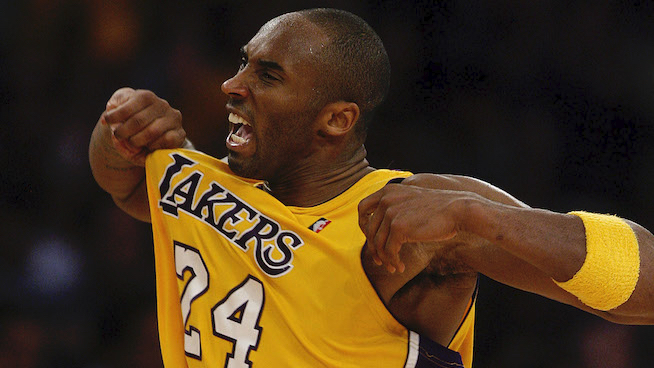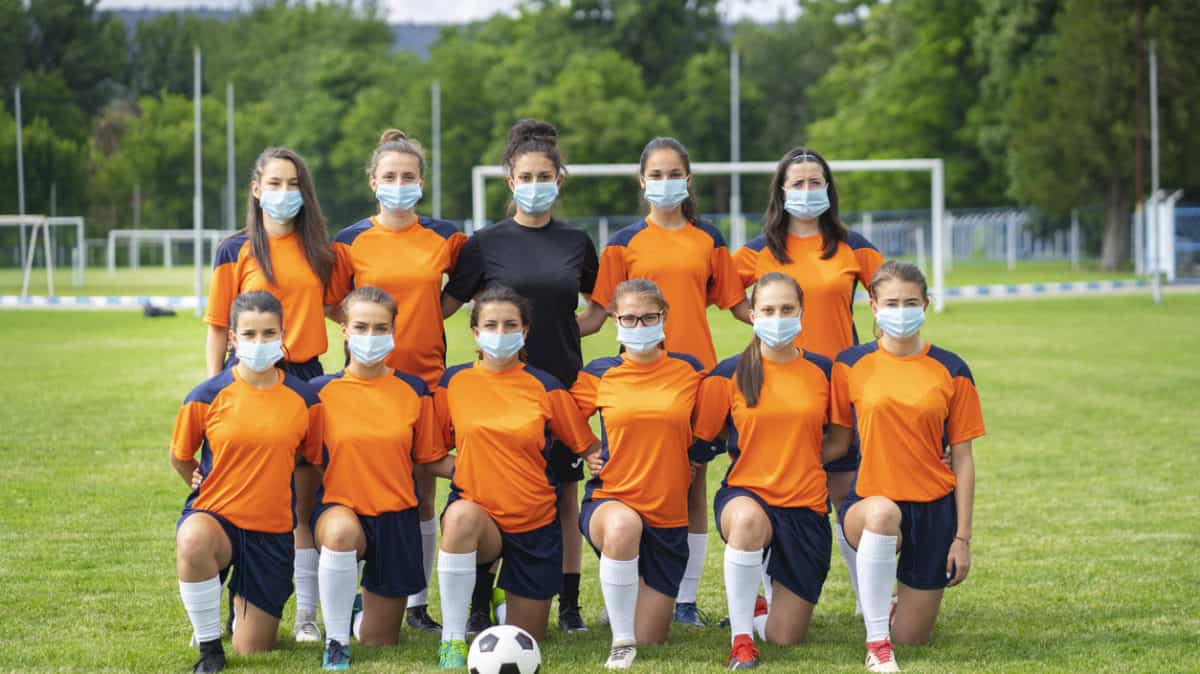The Single-Leg RDL: How to Perform It, Common Mistakes and Advanced Variations
The Single-Leg RDL is a Potent Exercise
For athletes, it develops the single-leg strength needed to be explosive off both legs when sprinting, jumping, and changing directions. It also focuses on the glutes and hamstrings, which are the primary drivers of the skills just listed.
More importantly, the Single-Leg RDL helps to eliminate strength imbalances on the left and right sides of the body and improves lower-body stability, which protects the knees from injury.
For non-athletes, the Single-Leg RDL is one of the best all-around exercises for developing lower-body strength, improving long-term health, and improving glute aesthetics (if that’s your goal).
But like many great exercises, its form is butchered more often than not. Sometimes lifters look like Quasimodo trying to raise and lower weight. Or, they bend straight forward and put a dangerous amount of stress on their lower back.

Performing Single-Leg RDLs with decent technique isn’t all that hard. But doing it perfectly can be a challenge, even for athletes and coaches who have significant experience in the weight room.
To help you master Single-Leg RDL, we’re going to give you the essential form cues, helpful tips, a strategy for learning the movement, and our favorite advanced versions to add serious strength to the backside of your body.
How to Perform the Single-Leg RDL

- Step 1: Stand balancing on your right leg and hold a dumbbell with your left hand in front of your thigh.
- Step 2: Sit your hips back as if you were being pulled by a rope attached to your waist., and allow your right knee to bend slightly. Your left leg should be straight (it’s OK if there’s a slight bend in the knee) and in line with your body throughout the rep.
- Step 3: Keeping your back flat, continue to bend at the waist until the dumbbell is at about mid-shin height (this ultimately depends on your hamstring flexibility).
- Step 4: Drive through your heel and push your hips forward to stand up to the starting position.
Coaching Points
- Focus your eyes on a fixed object about 10 feet in front of you.
- Set your neck by giving yourself a double chin.
- Hold the dumbbell as tightly as possible.
- Flex your glute when standing to improve balance.
- Try not to touch your elevated foot to the ground throughout the entire set.
- Take a deep breath in before each rep and tighten your core.
- Avoid rounding your back as you lower the dumbbell, especially as it gets close to the ground.
- Lower the dumbbell straight down in a vertical line.
To perfect this technique, we recommend following this five-step process:
Step 1: Perfect the Hip Hinge
The Hip Hinge is a fundamental movement pattern that’s essential for many exercises and sports skills. If you can’t hip hinge properly, there’s no way you can do the Single-Leg RDL.
Tony Bonvechio, strength coach at Cressey Sports Performance, provides detailed instructions on how to perfect the hip hinge in this article.
Step 2: Perform Double-Leg Dumbbell RDLs.
Once you have the hip hinge down, try double leg Dumbbell RDLs. Start light and focus on keeping the dumbbells close to your legs throughout the entire rep. This is also a good opportunity to find your comfortable range of motion, which depends on your hamstring flexibility.
Step 3: Try Supported Single-Leg RDLs
Try doing a Single-Leg RDL while holding on to something like a TRX Suspension Trainer with the hand opposite your working leg. That way you can focus on perfecting the technique without worrying about balance.
Step 4: Perform an Unloaded Single-Leg RDL
Take away the strap and do Single-Leg RDLs without weight. To force yourself to sit back and keep your body in a straight line, reach forward as you lower into the exercise.
Step 5: Add some weight
Now it’s time to load it up. Gradually add weight, and increase the load only if you can perform reps with perfect technique. Set up a camera or have a friend film you so you can assess your form. Eventually, you should be able to load up this exercise and develop some serious strength.
If you still have problems with the form, try these RDL variations from strength coach Seth Blevins.
If you’ve mastered the Single-Leg RDL, here are some advanced variations. Each of them isn’t much different from the traditional Single-Leg RDL, but the weight setup and opportunity to use heavier loads allow you to continue challenging your body. I’ve tried each of these lifts and found them incredibly effective.
WATCH: Drew Brees Builds Strong Glutes With Kettlebell Single-Leg RDLs
Double Dumbbell Single-Leg RDL

Barbell Single-Leg RDL

Landmine Single-Leg RDL

RELATED:
RECOMMENDED FOR YOU
The Single-Leg RDL: How to Perform It, Common Mistakes and Advanced Variations
The Single-Leg RDL is a Potent Exercise
For athletes, it develops the single-leg strength needed to be explosive off both legs when sprinting, jumping, and changing directions. It also focuses on the glutes and hamstrings, which are the primary drivers of the skills just listed.
More importantly, the Single-Leg RDL helps to eliminate strength imbalances on the left and right sides of the body and improves lower-body stability, which protects the knees from injury.
For non-athletes, the Single-Leg RDL is one of the best all-around exercises for developing lower-body strength, improving long-term health, and improving glute aesthetics (if that’s your goal).
But like many great exercises, its form is butchered more often than not. Sometimes lifters look like Quasimodo trying to raise and lower weight. Or, they bend straight forward and put a dangerous amount of stress on their lower back.

Performing Single-Leg RDLs with decent technique isn’t all that hard. But doing it perfectly can be a challenge, even for athletes and coaches who have significant experience in the weight room.
To help you master Single-Leg RDL, we’re going to give you the essential form cues, helpful tips, a strategy for learning the movement, and our favorite advanced versions to add serious strength to the backside of your body.
How to Perform the Single-Leg RDL

- Step 1: Stand balancing on your right leg and hold a dumbbell with your left hand in front of your thigh.
- Step 2: Sit your hips back as if you were being pulled by a rope attached to your waist., and allow your right knee to bend slightly. Your left leg should be straight (it’s OK if there’s a slight bend in the knee) and in line with your body throughout the rep.
- Step 3: Keeping your back flat, continue to bend at the waist until the dumbbell is at about mid-shin height (this ultimately depends on your hamstring flexibility).
- Step 4: Drive through your heel and push your hips forward to stand up to the starting position.
Coaching Points
- Focus your eyes on a fixed object about 10 feet in front of you.
- Set your neck by giving yourself a double chin.
- Hold the dumbbell as tightly as possible.
- Flex your glute when standing to improve balance.
- Try not to touch your elevated foot to the ground throughout the entire set.
- Take a deep breath in before each rep and tighten your core.
- Avoid rounding your back as you lower the dumbbell, especially as it gets close to the ground.
- Lower the dumbbell straight down in a vertical line.
To perfect this technique, we recommend following this five-step process:
Step 1: Perfect the Hip Hinge
The Hip Hinge is a fundamental movement pattern that’s essential for many exercises and sports skills. If you can’t hip hinge properly, there’s no way you can do the Single-Leg RDL.
Tony Bonvechio, strength coach at Cressey Sports Performance, provides detailed instructions on how to perfect the hip hinge in this article.
Step 2: Perform Double-Leg Dumbbell RDLs.
Once you have the hip hinge down, try double leg Dumbbell RDLs. Start light and focus on keeping the dumbbells close to your legs throughout the entire rep. This is also a good opportunity to find your comfortable range of motion, which depends on your hamstring flexibility.
Step 3: Try Supported Single-Leg RDLs
Try doing a Single-Leg RDL while holding on to something like a TRX Suspension Trainer with the hand opposite your working leg. That way you can focus on perfecting the technique without worrying about balance.
Step 4: Perform an Unloaded Single-Leg RDL
Take away the strap and do Single-Leg RDLs without weight. To force yourself to sit back and keep your body in a straight line, reach forward as you lower into the exercise.
Step 5: Add some weight
Now it’s time to load it up. Gradually add weight, and increase the load only if you can perform reps with perfect technique. Set up a camera or have a friend film you so you can assess your form. Eventually, you should be able to load up this exercise and develop some serious strength.
If you still have problems with the form, try these RDL variations from strength coach Seth Blevins.
If you’ve mastered the Single-Leg RDL, here are some advanced variations. Each of them isn’t much different from the traditional Single-Leg RDL, but the weight setup and opportunity to use heavier loads allow you to continue challenging your body. I’ve tried each of these lifts and found them incredibly effective.
WATCH: Drew Brees Builds Strong Glutes With Kettlebell Single-Leg RDLs
Double Dumbbell Single-Leg RDL

Barbell Single-Leg RDL

Landmine Single-Leg RDL

RELATED:










